Tuesday's Super Harvest Moon and Partial Eclipse Is Rare Double Event
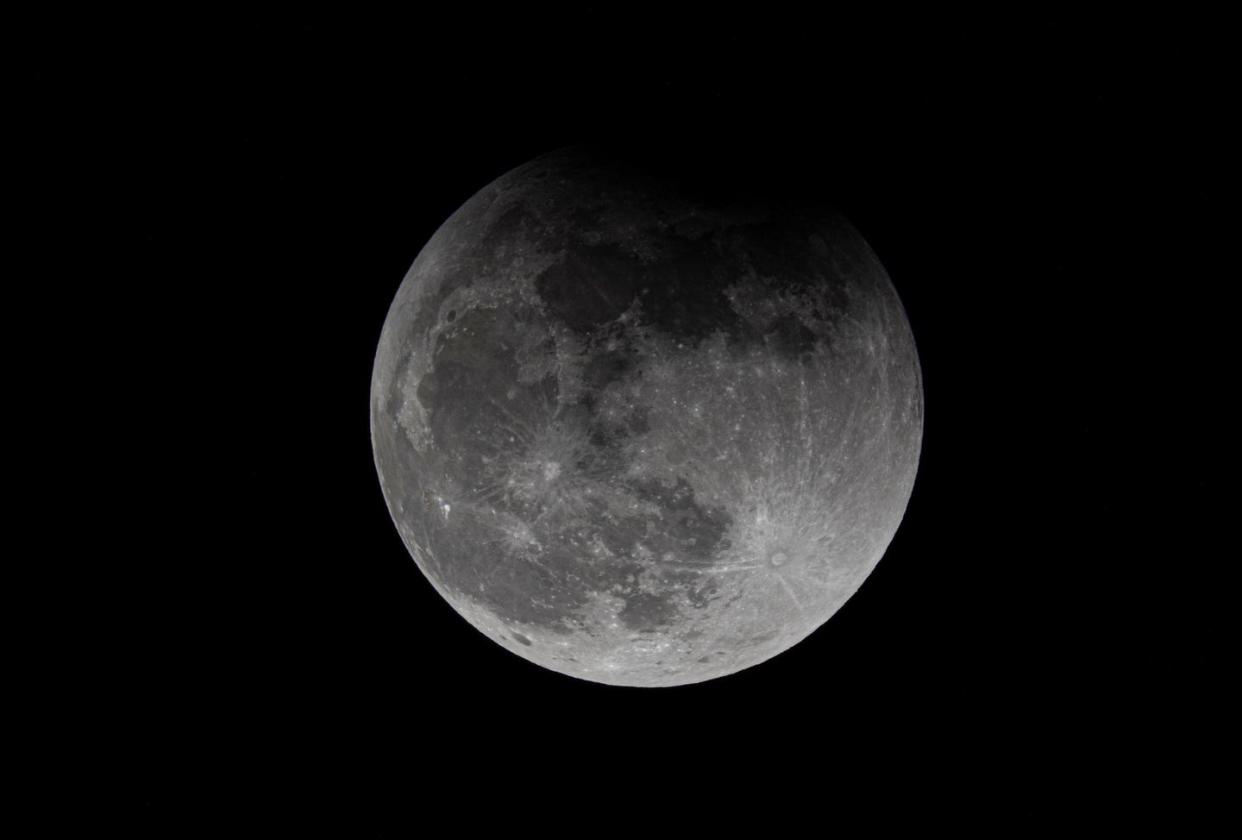
It’s time for that annual autumnal event—gazing upon the full Harvest Moon on Tuesday, September 17. The name denotes that it’s the full moon that falls closest to the autumn equinox, which is sort of the sun’s way of saying, “Bring on the pumpkin spice lattes and sweater weather!” This year, the Harvest Moon will be a supermoon and a partial lunar eclipse too. Although none of these features alone are rare, altogether they make they make this moon unique.
So, when you look up in the sky on Tuesday, what are you looking for?
Since it will only be a partial lunar eclipse, the moon will not take on the foreboding reddish hue that is the hallmark of a complete lunar eclipse, also called a blood moon. Instead, look for a slight dimming of the moon at 8:41 p.m. ET as the moon enters the Earth’s partial (outer) shadow, NASA says. As it progresses, a small top portion of the moon will enter the Earth’s full shadow (umbra), beginning at 10:13 p.m. ET, peaking at 10:44 p.m. ET, and ending 11:16 p.m. ET. The event will end when the moon exits the partial shadow at 12:47 a.m. ET.
As for the “super” part of September’s full moon, that simply means this moon will be within 90 percent of its closest point to Earth in its orbit—357,486km from Earth to be precise, according to astronomer Fred Espenak’s site, Astropixels.com, and the second closest full supermoon of the year. This means the moon will appear a little larger and a little brighter (though the partial eclipse will dim it). Supermoons also slightly amplify full and new moon tides, also known as spring. Most experts agree the visual difference is hard to perceive.
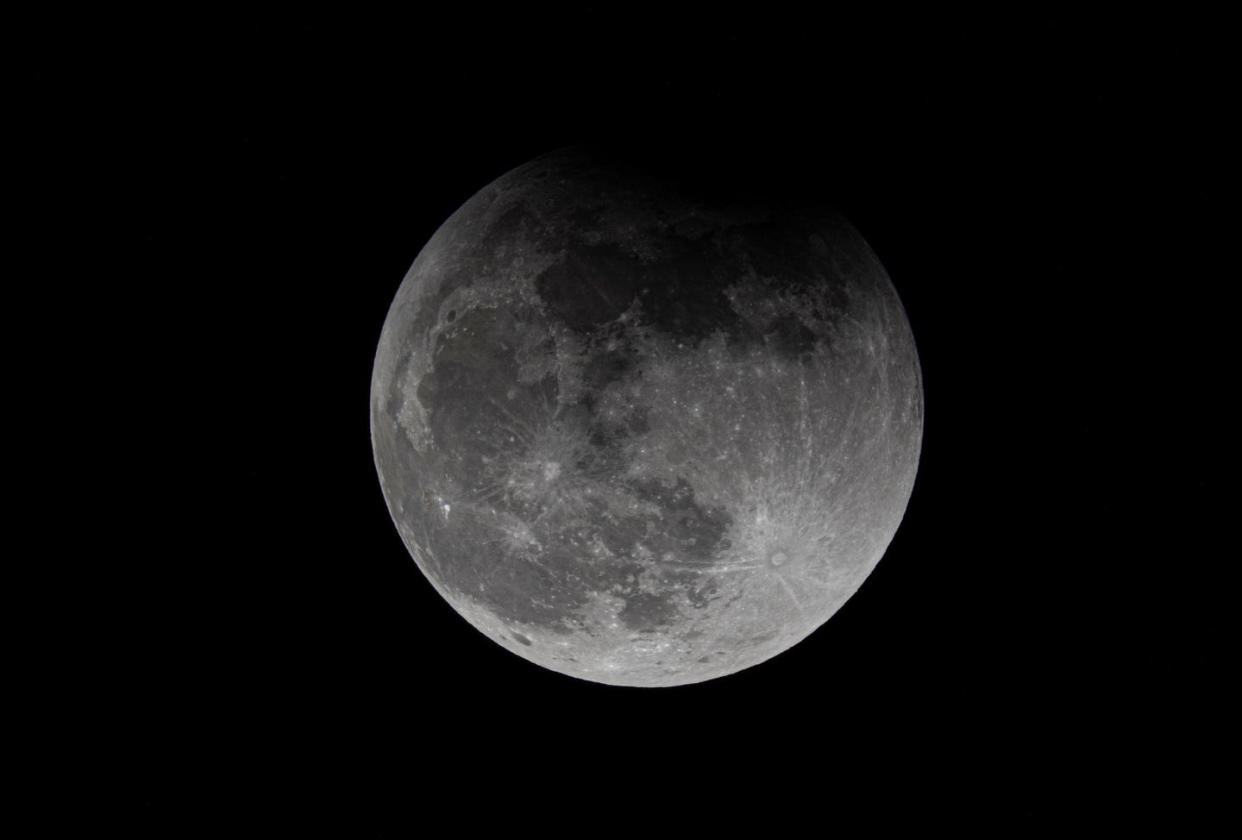
What is the Harvest Moon’s meaning?
The Harvest Moon is the full moon that happens closest to the autumnal equinox, or the official start of fall. For several nights in a row, a large full moon rises shortly after sunset. Long before electricity, farmers would take advantage of this bright moonlight when it was time to harvest. The extra light extended the evening working hours, hence why it’s called a Harvest Moon.
The date varies from year to year, but the Harvest Moon usually occurs in September in the Northern Hemisphere. Every so often, it falls in October. (In the Southern Hemisphere, it's the full moon closest to the equinox in March).
In Native American cultures, the Harvest Moon may also be called a Corn Moon, Barley Moon, or Wine Moon (all names for September’s full moon), or the Singing Moon or Elk Call Moon (we can get behind this name!). Some of these names tell us what crops were harvested with the help of this bright moon in days of old. This full moon also marks the Mooncake Festival in Chinese, the beginning of Pitru Paksha on the Hindu calendar, Madhu Purnima (Honey Full Moon) in Buddhism, and Imo Meigetsu (Potato Moon) in Japanese culture.
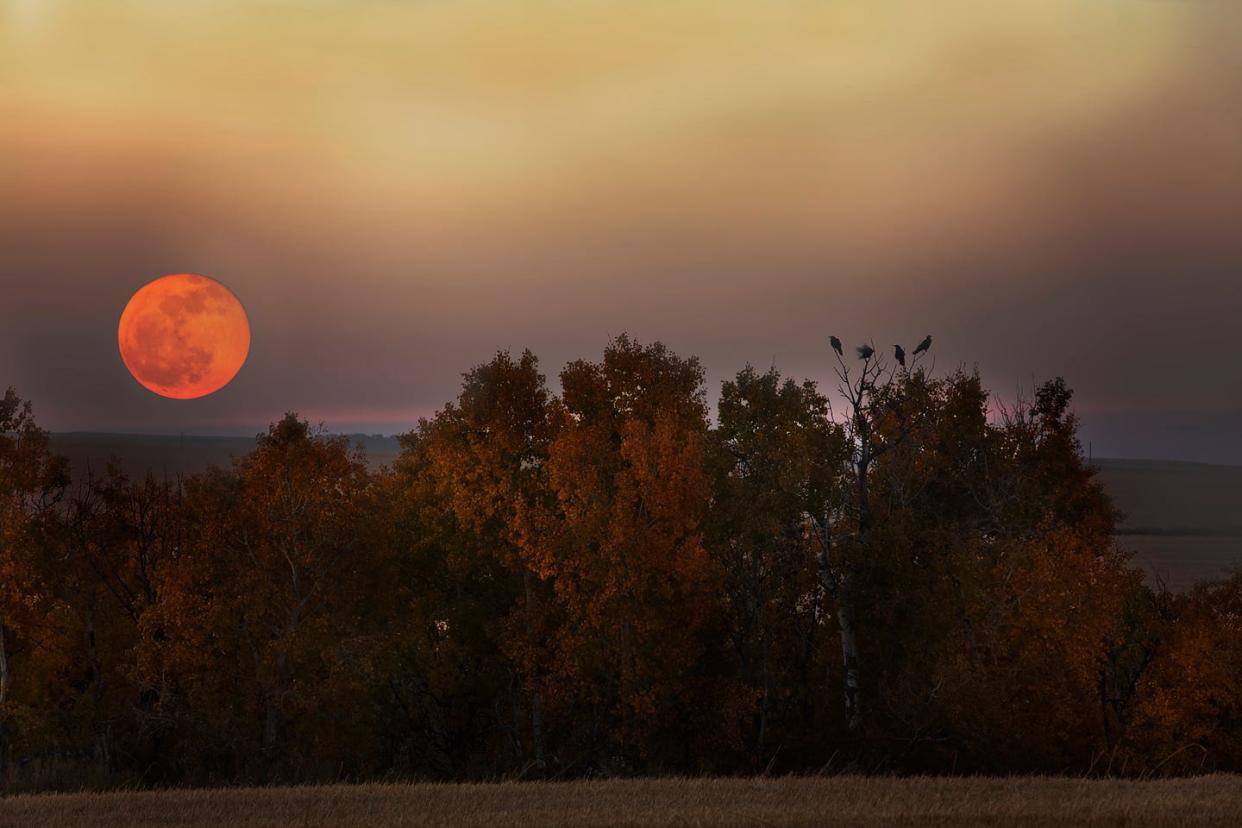
We can thank the moon’s orbital position in relation to Earth this time of year for the qualities of the Harvest Moon.
In general, a full moon rises and sets on the opposite schedule of the sun (the sun and moon on are on opposite sides of the Earth during this moon phase, after all). The following night, normally you can expect the moon to rise about 50 minutes later as the moon travels along its tilted orbit.
During a Harvest Moon, however, the moon’s orbit is nearly parallel to the Earth’s eastern horizon at sunset. The result: Not only can you expect a prompt full moonrise at sunset, but also the moon rises only 25 to 30 minutes later each day (the delay gets even shorter the farther north you are of the equator, says Astronomy.com). So, we enjoy several evenings of full (and nearly full) moons that light the sky just as the sun drops off.
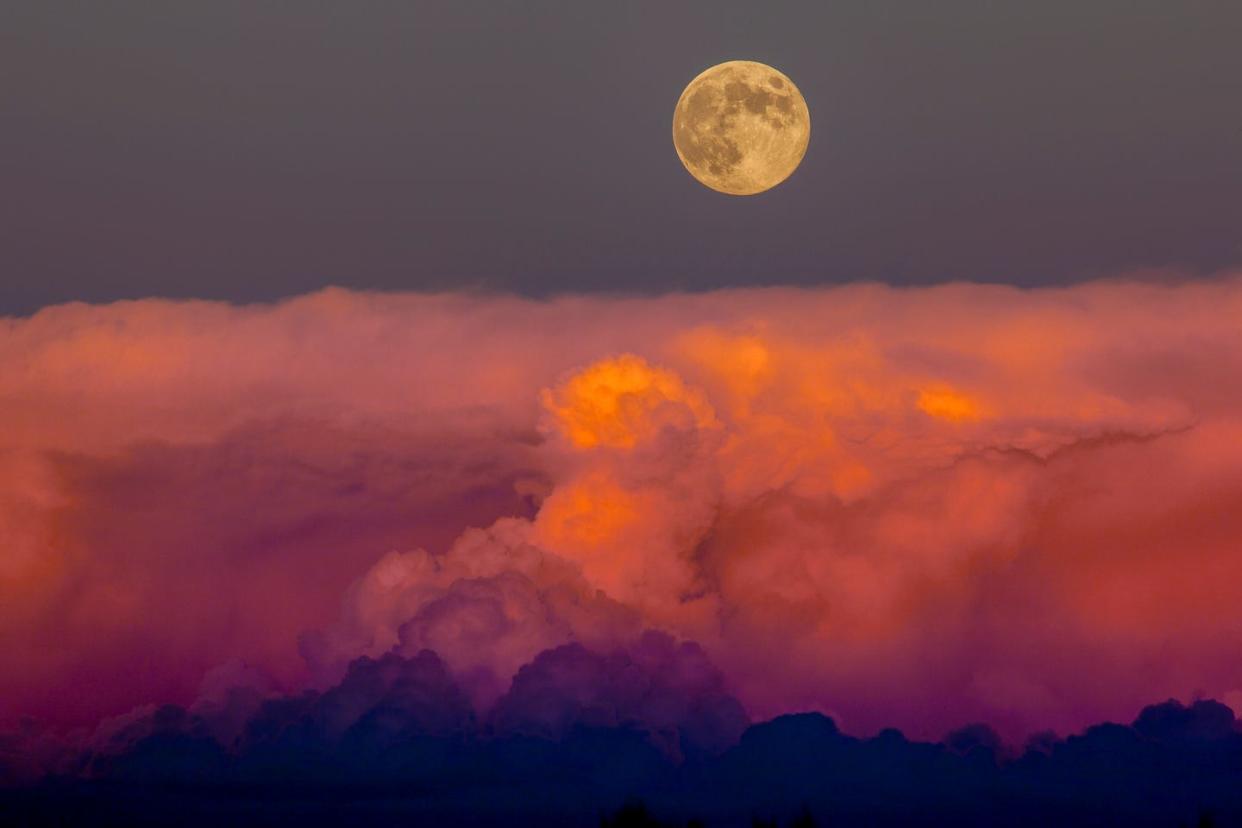
When can we see it this year?
The 2024 fall equinox happens on September 22 in the Northern Hemisphere, and the full moon closest to it is the Harvest Moon. This year, that full moon falls on September 17, peaking at 10:34 p.m. ET. The partial lunar eclipse will happen that night from 8:41 p.m. to12:47 a.m. ET, peaking at 10:44 p.m. ET.
The the full moon phase is a fleeting moment, the Harvest Moon will appear full for a few days, beginning the day before. So mark your calendars for evening strolls September 16–18!
What does it look like?
Since the big of draw of the Harvest Moon is that it brightens the evening sky around sunset for several days in a row, you most likely will be taking in the view when the moon is close to the horizon. That alone can make it appear bigger, brighter, or more orange: The larger appearance is a visual trick called “the moon illusion,” while the orange or reddish color is due to viewing the low-hanging moon through particles in Earth’s atmosphere.
In 2024, the Harvest Moon will be a supermoon, so it will be closer to Earth than your average full moon. That will make it appear a little bigger and brighter, but it’s difference that is hard to perceive. Mostly, it will turn the effect of the moon illusion up a notch.
During the partial lunar eclipse, the moon will dim. The top 8% of the moon will be in full shadow at the event’s peak, according to NASA.
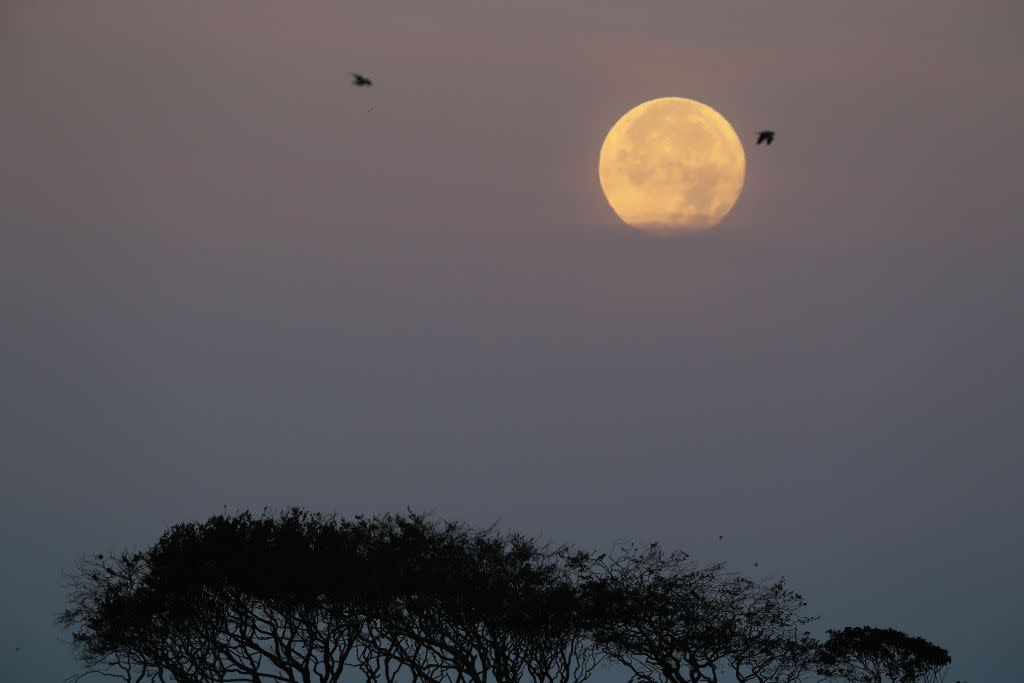
The Harvest Moon also occurs right around when birds are migrating south for the winter. So, depending on where you live, you might see birds fly by the full moon for a truly stunning sight.
Your Harvest Moon viewing party soundtrack must include…
“Shine on Harvest Moon.” This song, which dates to 1903, was covered by the late Leon Redbone.
“Harvest Moon” by Neil Young (or this cover by Lord Huron). Fun fact: Neil Young has sung a lot about the moon—28 times to be exact! Many of his projects relied on the lunar calendar for production and release as a form of good luck.
You Might Also Like
